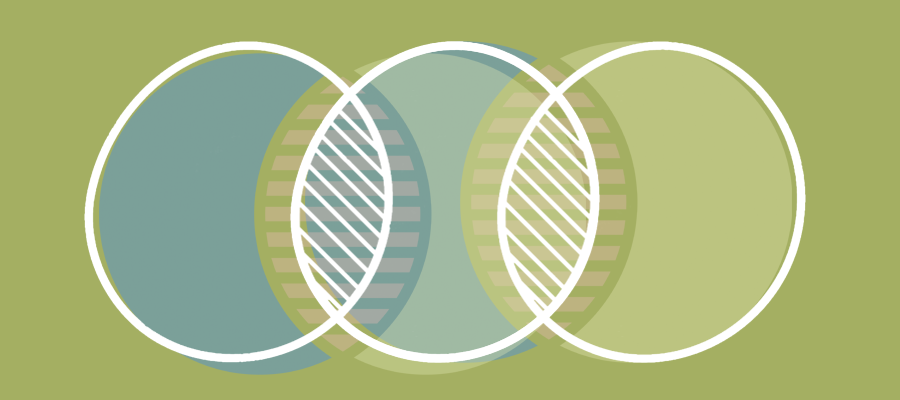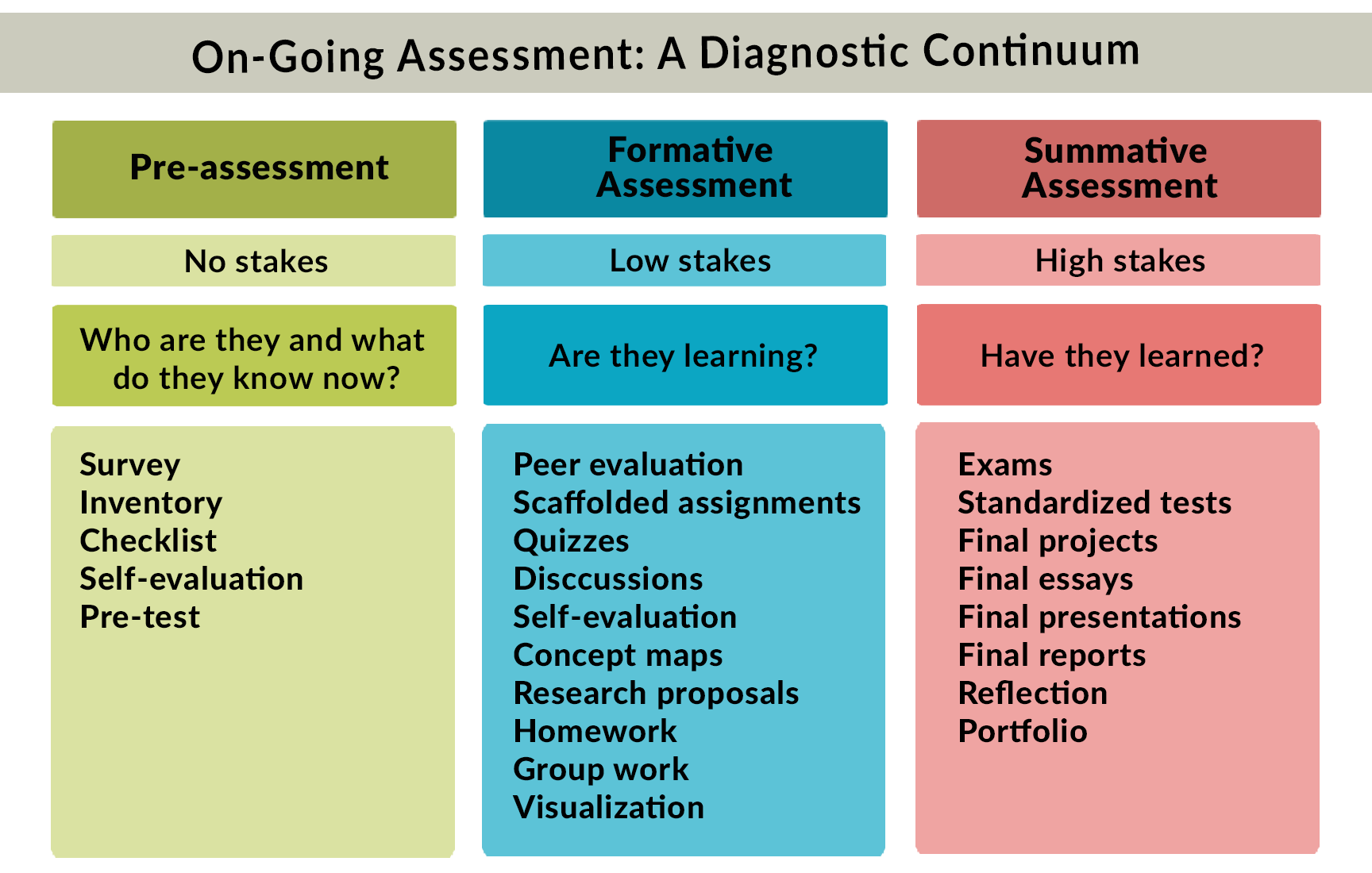
Following the Backward Design model, developing an assessment strategy is the second step in course design. Assessments provide the evidence that the stated learning objectives for individual class sessions and the overall course have been met as long as the assessments directly align with the learning objectives.
Assessments and learning activities are interrelated and often overlapping concepts. Generally, the key difference is grading. The purpose of a learning activity is to allow learners the opportunity for low-stake practice, it does not measure formal learning and is usually ungraded, or graded as Satisfactory/Unsatisfactory. In contrast, an assessment is a formal measurement of learning where standard grading is assigned. If a learning activity is graded, it can be defined as an assessment. Some types of assessments and learning activities include:

Pre-assessments/learning activities:
- Occur at the start of a course to get to know learners in your course
- Occur at the start of a class session and evaluate baseline knowledge of course content
Formative assessments/learning activities:
- Monitors learning through low-impact/low stake quizzes, discussions
- Provides ongoing feedback on progress throughout the course
- Learners use this to identify gaps and improve learning outcomes
- Targets specific skills and learning objectives
Summative assessments:
- Occurs at the end of a learning experience, instructional unit, or course
- High-impact, high stakes
- Collects evidence of cumulative learning, skill, and proficiency
- Aligned with learning objectives, and competencies, used for accountability
Low-stakes assessments/learning activities:
- Carries no/minimal point value (e.g., short quizzes, review questions, discussion boards, brief team assignments)
- Offers learning opportunities to practice skills incrementally and to continually assess their own learning relative to the module learning objectives throughout the course. Keeps students engaged.
High-stakes assessments:
- Carries high point value (e.g., midterm/final exams, individual or team final projects and papers)
- Provides opportunities for learners to demonstrate cumulative knowledge and mastery of skills/competencies at key time points during a course. Because high-stakes activities are not as frequent, they are less likely to keep learners engaged with the course content on a weekly basis.
Authentic assessments:
Authentic assessments are designed to measure learning through real-world tasks and when possible in realistic settings. They require the application of knowledge and skill to novel situations that rely on use of critical thinking, judgment, and innovation. Such assessment may involve outside stakeholders, incomplete problem and data sets, and other complex tasks. While students may be more motivated by such assessments, they can also evidence more frustration and lower tolerance for ambiguity. For instructors, developing authentic assessments is also more time-consuming and more challenging to evaluate and grade.
Resources
Emory University's Center for Faculty Development and Excellence (CFDE): Quality Assessment Practices and Assignment Examples
Indiana University Bloomington, Center for Innovative Teaching and Learning: Authentic Assessment

